This Fall, Get Bullish on Durham
A short drive from Roanoke, Durham offers travelers cosmopolitan vibes and a community that celebrates an authentic sense of self.
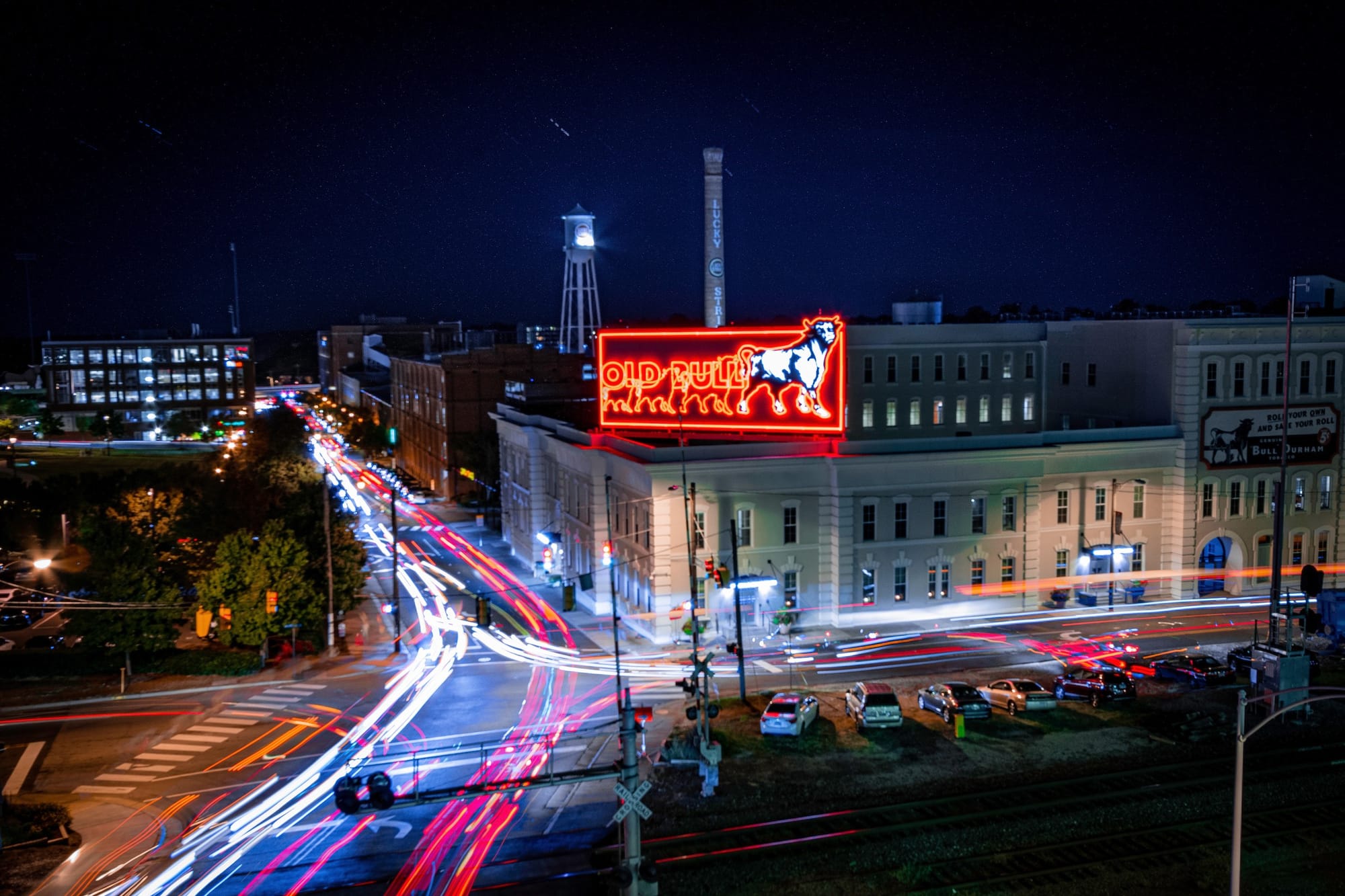
From eateries to cultural happenings, travelers who plot a course for Durham, North Carolina this fall will be in for a pleasant surprise.
Not that The Bull City wasn’t a special place before, even if a bit grittier than its sister cities of the Triangle.
Durham has boasted long-adored and storied gastronomic institutions for decades like Nana’s (somewhat recently reborn as an art deco-styled finer dining establishment under Chef Matt Kelly’s tutelage) and the entertainment offerings of the American Tobacco campus.
Quite simply, it feels like Durham has come into its own, no longer a minor player in the area housing the tri-cities of Raleigh, Durham and Chapel Hill. The north point of the Triangle, the Bull City has emerged as a worthy destination in its own right, with a quiet and unassuming confidence, and reveling in its own particular sense of community.

Big city vibes
Durham is a scant two and a half-hour drive through mountains and lowlands from the Star City. And while it’s possible for visitors to avail themselves of high-quality touring Broadway shows (Venues ranked the Durham Performing Arts Center number two in the country based on attendance), the DPAC also attracts a diverse and eye-catching lineup of artists.
This season includes alt-folk hero Father John Misty earlier in the fall, a delightfully diverse lineup of comedians in John Mulaney, Wanda Sykes, and Bassem Youssef, as well as charismatic science explainer Neil de Grasse Tyson. Touring shows include Tina: The Tina Turner Musical and holiday crowd pleasers The Sound of Music and Elf-The Musical, and the longest touring drag show in the country, a Drag Queen Christmas.
This fall will also bring a healthy dose of gastronomic giddiness to the Bull City. In April, the Michelin Guide announced it would consider entries from the American South. As gastronauts bet on which local contenders will make the cut for inclusion in the guide’s hallowed pages (the lucky chosen ones will be announced during a ceremony at the Peace Center in Greenville, S.C. on Nov. 3), no doubt the food industry’s little red book will not only focus on the city’s fine dining heavy hitters — like the newly minted Barsa helmed by Vinod Kumar, a veteran of Michelin-starred kitchens — it will also broadly elevate the vibrant food landscape.
But limiting activities to the most well-trodden and popular tourist paths, as exquisite as they are, you’d be missing some of the best reasons to visit The Bull City, particularly now.
Tourism growth has hit 20 percent in the last 10 years, according to Discover Durham, the city’s tourism board. In 2023, that translated to 13 million visitors who spent $1.1 billion.
While that kind of economic growth is almost always touted as a positive for city coffers, it is indicative that Durham has also struggled with the negative effects of managing an influx of more permanent residents and their effect on infrastructure and land for future projects. Mission-driven organizations like Preserve Rural Durham are fighting to conserve wild areas and encourage improvement of existing infrastructure before developers gobble up undeveloped land.
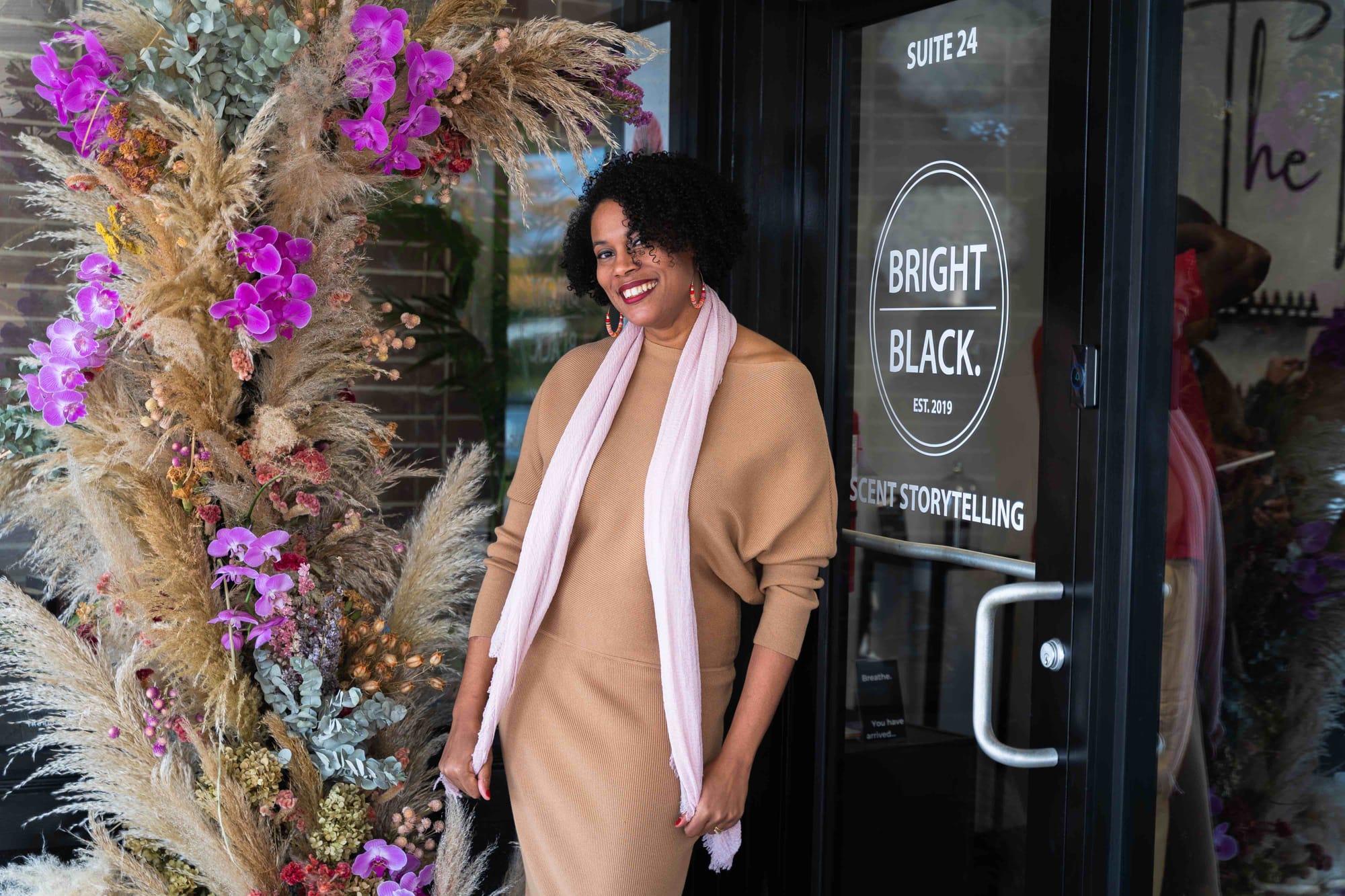
Scents of community
The lessons of growth in places like Austin, Texas that have experienced supernovae explosions in population is something that Tiffany Griffin is all too aware of.
Griffin is the owner of Bright Black, a Black-owned fragrance design scent studio grounded in community empowerment.
“I think Durham has been very vigilant about retaining the spirit of Durham. I think we look to places like Austin and are like, actively fighting against having Hermès on Main Street,” she said from the sofa of her maker space that is part laboratory and part retail showroom.
While the word “authentic” gets thrown around willy-nilly these days, Griffin’s unassuming and light-filled space in Lakewood Shopping Center is about as authentic an experience as it gets for out-of-town visitors and locals alike.
Every Saturday Bright Black welcomes visitors in an open studio arrangement to choose from a wide array of fragrances to design their own custom scents. The Saturday sessions run from 11 a.m. to 5 p.m. and cost $35. The drop-in “Design Your Own Body Fragrance” session does not require reservations, unless groups are larger than four.
A visit to Griffin’s studio is a good starting point for trip planning. You’ll feel empowered and leave with a memorable and wearable souvenir.
On the morning that I visited, I experimented with scents that belong to floral, fruity, musky and citrusy profiles. Nosing my way through several fragrances, and a couple of concoctions (one too floral, one too earthy) I settle on a musky citrus that absorbs into my skin, sweet but not cloying, disappearing into my body chemistry that smells, well, authentic, like it should be there, not merely lying on top.
It’s an experience that Griffin came to develop first as a psychologist studying resilience and racial discrimination and later as an international development officer for the U.S. Agency for International Development’s Feed the Future Program. Her work at the federal level brought a sensibility of social justice to her background in psychology. Social entrepreneurship seemed like the likely next step when the administration changed in 2016 and she resigned her position.
“I wanted to bring in other senses, other parts of my brain, other tools to share stories, and then, by default, to hopefully build connection. So I went back to this idea of scent that I had been playing with in 2014,” Griffin said.
She has developed scents for the WNBA, as well as crafted her own signature scent lines that pay homage to various music genres including hip hop, gospel, and bachata.
Many of the scents Griffin has developed for her own brand have connections to social justice. One called “We Will Not Be Erased” explores Black identity through the blackberry vine with notes of the fruit, redwood, and bergamot.
“Blackberries regenerate themselves,” said Griffin of her initial light bulb moment. “Like, you can hack a bush and you have to really damage the root for it not to eventually regenerate.” In the blackberry vine Griffin saw a perfect metaphor for Black resilience. “You can hack budgets, you can hack programs, you can censor through social media and other media, and yet, we will regenerate. We'll do it because we've done it,” she said.
It's something that could also be said of the city of Durham.
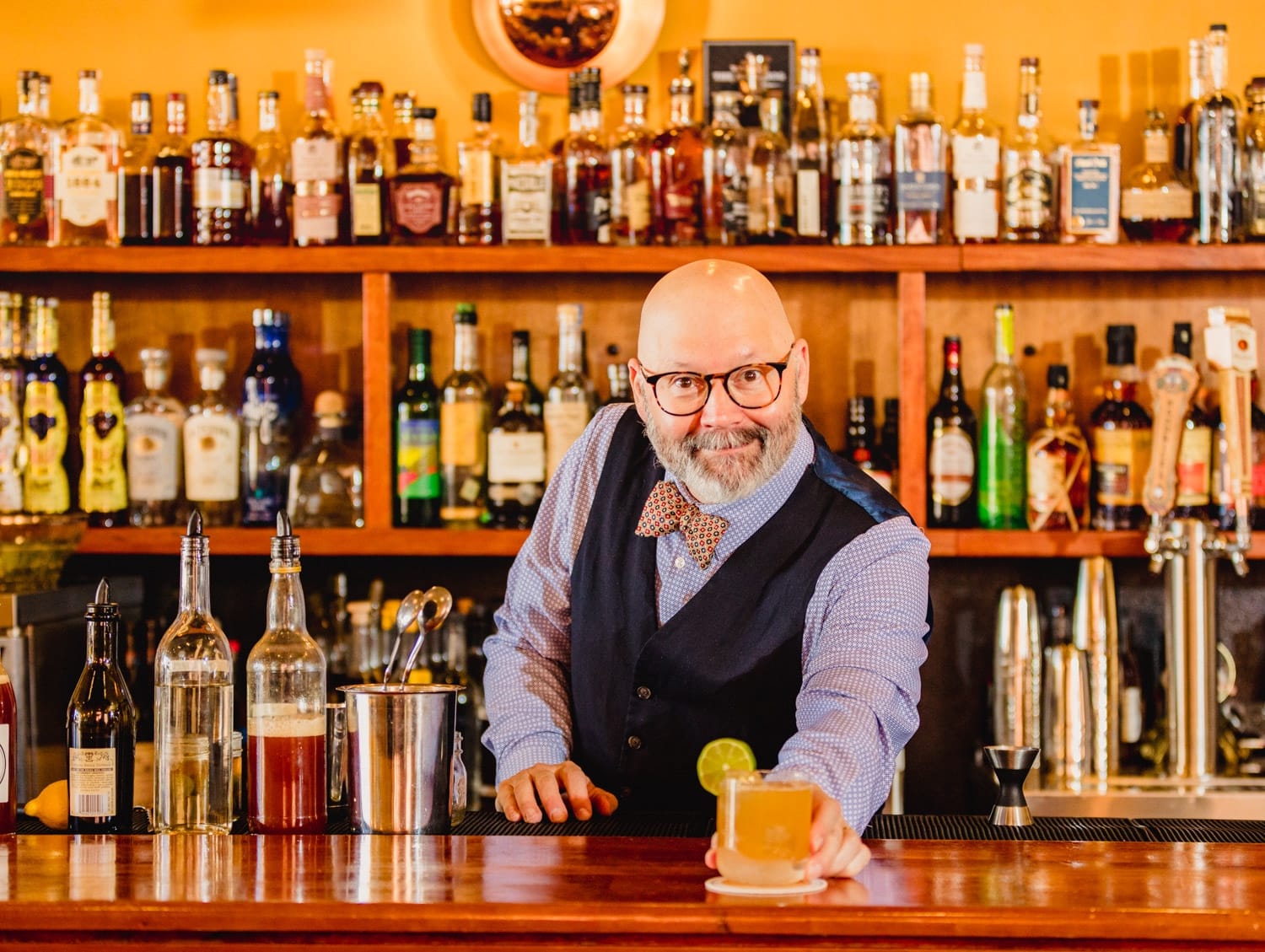
Fall into cocktail flavors at Alley Twenty Six
When Shannon Healy, owner and operator of Alley Twenty Six, told folks he wanted to open a craft cocktail bar in downtown Durham in 2012, there was “mostly confusion,” he recalled.
Since his opening, he has expanded to a full kitchen. Guests can order small plates and high-end snacks for noshing at the bar, including tinned fish and designer taro chips, among other tasty victuals.
He has seen a lot change since he opened his doors 13 years ago and has come to count high-caliber restaurants and bars as neighbors within a several block radius. But one thing that hasn’t changed is Durham’s reputation to hold its restaurateurs and businesses to account in maintaining a high standard for community-driven establishments and as a place whose residents demand originality and innovation, not a second concept of its sister cities.
“Durham has its own voice,” Healy told me. “And the market here wants you to speak to Durham, whereas I think some of the folly of people that come in and don't do well here from other other markets is that they think that where they're from is going to be inherently impressive to Durhamites.”
The point Healy thinks is to come with an authentic voice. (There’s that word again.)
“Are you going to add to what we have here, that is, places that have a voice, and places that have an identity, and places that feel like they should be in this spot,” he said.
For fall, Healy will be offering menu options that are hardier and feature staples that rotate out over the summer when the mercury can climb to a sweltering 104 degrees in the landlocked city. Diners will anticipate the return of items like deviled eggs topped with bacon, pickled red onions, smoked paprika, and chives as well as a standard favorite: a steak frites entrée with bone marrow herb butter and house-cut fries.
In the craft cocktail space, guests at Alley Twenty-Six will be able to enjoy flavors associated with the fall equinox. Using ranch water as a cocktail base, a mix of sparkling water and tequila, the cooler-weather cocktail will be adjusted for the season with spicier añejo tequila, and instead of using water, Healy uses apple juice that contains malic acid to ramp up tartness.
“It'll be like a tart apple,” Healy said,” and we'll sneak in a little Becherovka, which is like a very cinnamon-infused Czech liquor. So it's kind of like an apple pie spice that you get.”
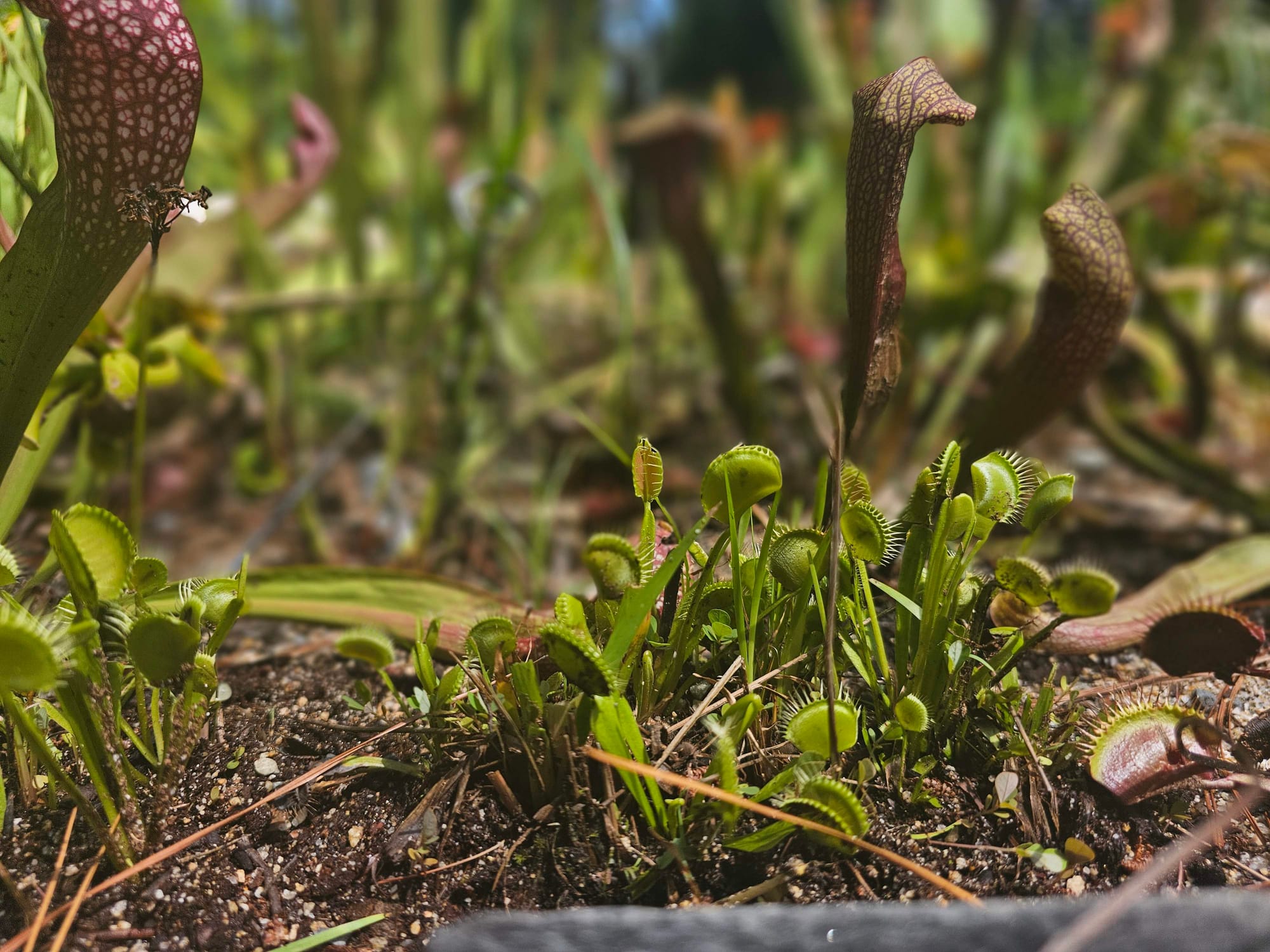
Chrysanthemums and carnivorous plants
April showers bring May flowers, but November in Durham means getting outdoors to enjoy the cooler weather at the Sarah P. Duke Botanical Gardens. Visitors can enjoy a singular floral experience that showcases later season blossoms of mums and (perhaps appropriate for Halloween) blood-thirsty carnivorous plants that are endemic to a thin, 70-mile-long patch in the Coastal Carolinas.
The garden’s annual fall chrysanthemum festival (this year, it is Nov. 1) is held in partnership with the Central Carolina Chrysanthemum Society. Members from the society will be available to answer questions about the myriad 13 classes of mums that will be on display in the garden’s Culberson Asiatic Arboretum, and visitors will learn things such as this fun fact: Chrysanthemums are actually not single flowers, they’re composite flowers, made up of smaller flowers called florets,.
The gardens also boast a newly imagined habitat of the coastal region that features carnivorous plants, such as the parrot pitcher and the Venus fly trap.
Venus fly traps, despite enjoying worldwide renown for their ability to digest flesh, are native only to a narrow strip of land between North and South Carolina in the nutrient-poor soil of longleaf pine savannas. Hence the need for the plants to eat insects.
“Many of these plants have lost a huge amount of their original habitat,” said Horticulturist Megan Luckett, who manages the Bloomquist Garden of Southeastern Native plants at Duke Gardens.
The gardens create a connection to the actual ground zero of the Venus fly trap habitat at Green Swamp Preserve in Brunswick County, according to Luckett.
“When people of all ages find out that a lot of these carnivorous plants are from the Southeast and are native here, they want to see them more than any other plants that we have on offer,” she said. “So we felt like it was really important to make this immersive educational space to highlight both how cool they are and then also make people aware that they are imperiled for various reasons.”
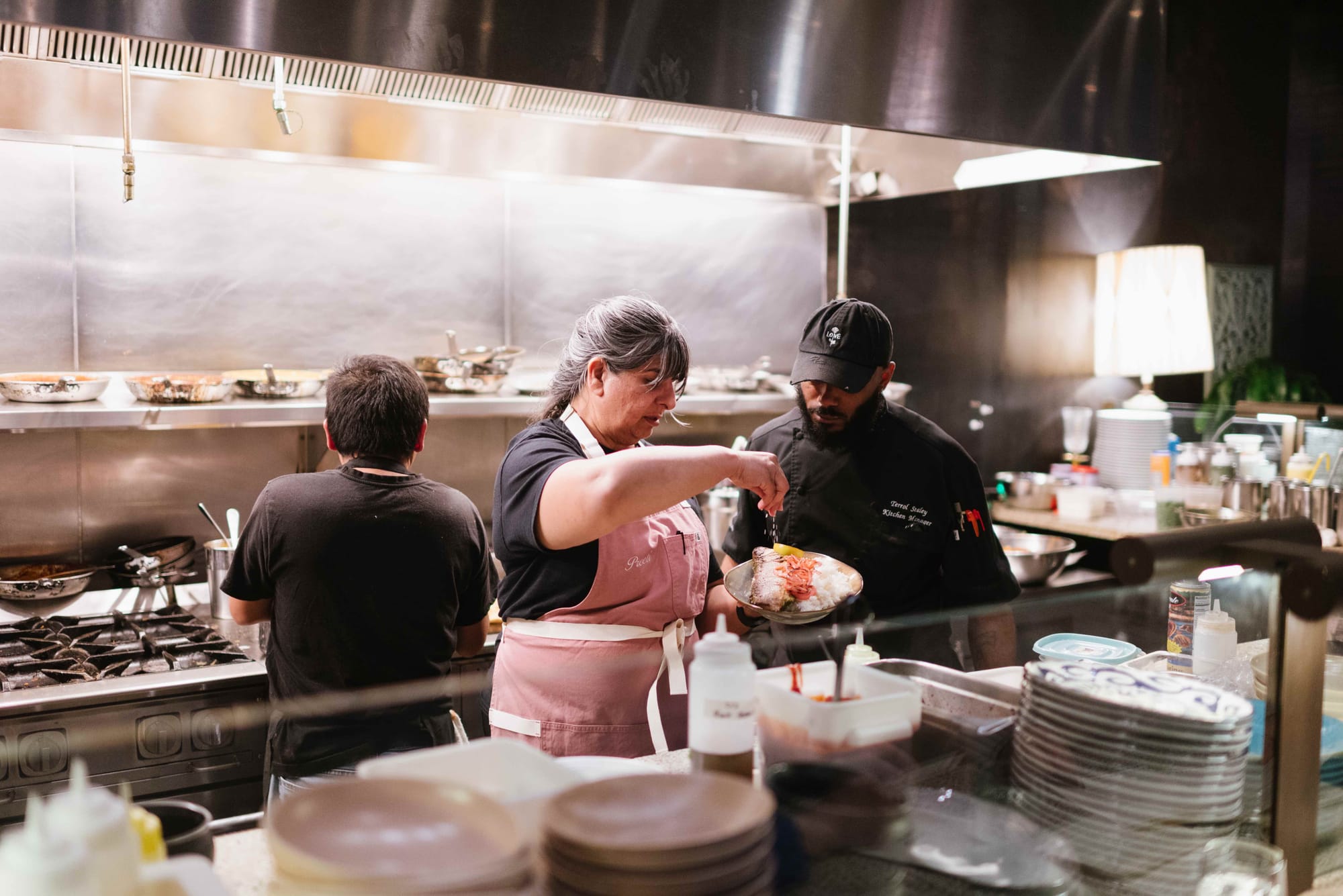
Cheeni, sweet, Cheeni
Culinary purists expecting perfect renditions of regional Indian cuisine will not be appeased at Cheeni.
And that is their loss.
Walking into Cheeni feels like a private dinner invitation to your favorite auntie’s Midtown Manhattan apartment where Bollywood favorites perpetually play on a wide screen television in the background, and yummy, comforting culinary experiments always await on the stove to be devoured over scintillating conversation.
To give context, Chef-Owner Preeti Waas taught herself to ride a motorcycle at 10 years old and by 16 she was racing them, she said in an interview with Our State magazine. In another incident from the same interview, Waas recounts how she and a classmate commandeered a school bus on a class trip to procure forbidden mutton kebabs.
One could assume Waas’s rebellion was an effort to steel herself against a less than idyllic home life that she fled at 21 to become a flight attendant.
Now those memories from her childhood have reorganized themselves in her restaurant in renditions that take cues sometimes from South Asia, sometimes from the American South, and sometimes from deep in her memory banks where complicated emotions surrounding food reside.
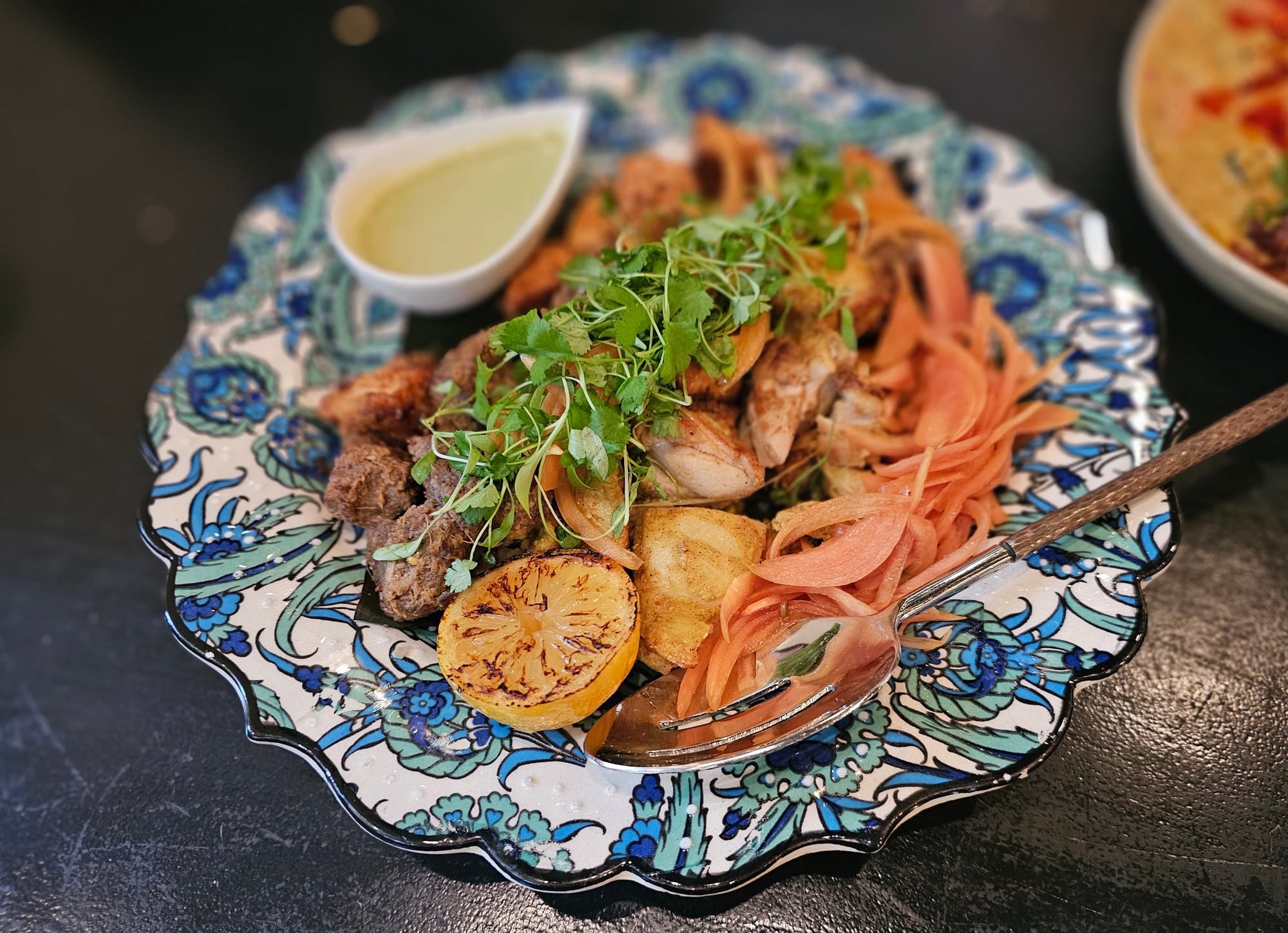
“Cheeni” in Hindi is associated with the word sugar and defines sweet things. The name is perhaps an homage to Waas’s previous coffee and pastry endeavor in Oklahoma, as well as the New York-based Levain Bakery-like cookies that are a dessert staple of the current menu.
The dishes at Cheeni are deeply satisfying in texture and taste, like the sweet char of the mushroom and bitter gourd sabzi that combines caramelized onions, and green chilies roasted in coconut oil to a succulent end, as well as the similar feel of the baby brinjals, otherwise known as eggplants, adorned with herbs in a an haute couture presentation on the most charming dinnerware. (Waas’s daughter Amy bragged that she picked out each and every piece herself).
My summer visit was punctuated with a weighty cookie and an ice cream dish inspired by Nimbu pani, a beverage to ward off dehydration in the relentless Indian heat made from lemon juice, sugar, black salt, and spiced with black pepper. This is emblematic of how inspiration works at Cheeni, by elevating and reimagining traditional food.
And dishes for fall promise to be just as imaginative.
One of Waas’s new favorites combines her own southern Indian heritage as well as where she finds herself now in the American South.
“Seekh kebab is very well known from Indian cuisine,” she said. “What we've done is we've taken Seekh kebab, but we're making it with lamb and we're wrapping it in collard leaves and cooking it that way, and it's served with a green mango and yogurt.”
Waas originally opened an establishment in Raleigh but she’s found her true rhythm and voice — and you might say finally found her authentic self — in Durham.

